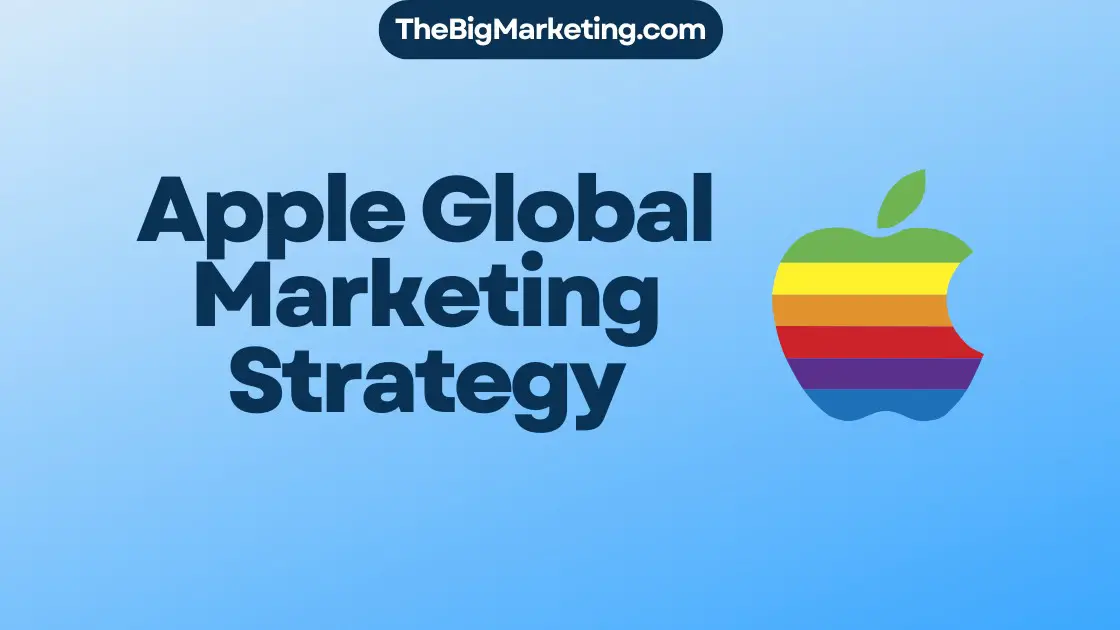Cisco Systems started in 1980 and leads in network devices. The company is known for buying other companies, like AppDynamics for $3.7 billion. This move made its cloud platform stronger. Cisco is also shifting towards software-driven solutions for its customers. We’ll look at Cisco’s 4Ps strategy in their marketing mix.
Key Takeaways:
- Cisco is a pioneer in network devices and management.
- The company has a history of successful acquisitions.
- Cisco is transitioning to software-driven solutions.
- We will explore the 4Ps strategy of Cisco’s marketing mix.
Marketing Mix of Cisco
The Marketing Mix of Cisco is about its 4Ps strategy – Product, Price, Place, and Promotion. Cisco uses pricing plans, innovative products, and smart promotion to stand out. These help Cisco compete well and reach its goals.
Product
Cisco’s range includes products for businesses, little companies, and home use. They offer routers, controllers, security tools, switches, servers, and IT certifications. All products use the latest tech for top performance and security.
Price
Cisco prices its products based on costs, market trends, and what rivals are doing. Prices vary to fit every budget. High-end products offer advanced features for big businesses. More affordable options suit small companies and home users.
Place
Cisco has built a broad network to distribute its products globally. They push for business deals and team up with partners. For small business tech, buyers can shop on Cisco’s website. For home tech, Cisco works with local sellers and partners.
Promotion
To boost awareness, Cisco uses different promotion methods. A key strategy is online ads on news and tech sites. Cisco also uses video tutorials on its site to help customers. It partners with design schools to find new talent and reach more people.
In short, Cisco focuses on making innovative products, setting flexible prices, having a big distribution network, and smart promotion. These strategies help Cisco keep its lead in the networking world.
Cisco Product Strategy
Cisco, a well-known tech firm, provides a diverse range of products. These cater to big companies, small businesses, and individual users. Cisco focuses on creating products that work well together and are top-notch. They aim to meet the needs of today’s digital world.
Range of Products
The Cisco product lineup includes different networking tools, such as:
- Routers: Cisco’s routers deliver high-performance network connectivity and advanced security features.
- LAN Controllers: Designed for large-scale deployments, Cisco’s LAN controllers provide centralized management and control for wireless networks.
- Security Gateways: Cisco’s security gateways offer robust protection against cyber threats and ensure secure access to network resources.
- Network Switches: Cisco’s network switches enable efficient data transfer and seamless connectivity within local area networks.
- Servers: Cisco’s servers deliver reliable computing power and are optimized for various workloads and applications.
- Data Services: Cisco offers a range of data services, including storage solutions and analytics tools, to help organizations derive valuable insights from their data.
- Certifications: Cisco’s certifications equip IT professionals with the necessary skills and knowledge to effectively implement and manage Cisco products and solutions.
Moreover, Cisco makes cable modems for home use and VoIP services. These services help offices communicate effectively and save money.
In conclusion, Cisco’s wide array of products shows its dedication. They aim to provide advanced tech solutions. Their goal is to enhance networking and spearhead digital innovation in all kinds of organizations.
| Product Category | Examples |
|---|---|
| Routers | ISR 4000 Series, ASR 9000 Series |
| LAN Controllers | Catalyst 9800 Series, Wireless LAN Controller |
| Security Gateways | Firepower Next-Generation Firewall, VPN Concentrator |
| Network Switches | Catalyst 9000 Series, Nexus 9000 Series |
| Servers | Unified Computing System, HyperFlex HX-Series |
| Data Services | HyperFlex Data Platform, MDS 9000 Series |
| Certifications | CCNA, CCNP, CCIE |
Cisco Price/Pricing Strategy
Cisco knows a good pricing strategy is key to success in a tough market. They offer different pricing plans for varied products and industries. Factors like production costs, market trends, and rivals are considered in their strategy.
Market trends are crucial in setting Cisco’s prices. They keep an eye on the market to keep prices competitive. This way, Cisco meets the varied needs of its customers by adjusting to the market.
Cisco prices its products by also looking at what competitors charge. They aim to offer good value and quality within a certain price range. Although Cisco might be pricier than Netgear or D-Link, its brand strength and reliability justify the cost.
Diverse Pricing Plans for Cisco Products
Cisco excels by providing diverse pricing plans. They understand the unique needs and budgets of different sectors. Hence, they have tailored options for businesses and household users.
For businesses, Cisco has higher-priced products geared for tough demands. These offer cutting-edge features, scalability, and top-notch security, explaining their premium price.
Home users and small ventures get more affordable products from Cisco. These products still promise effective, quality networking solutions. They are aimed at those concerned about costs.
Through diverse pricing, Cisco lets customers pick products suiting their budget and needs. This approach broadens their reach to various customer segments.
Price Range for Cisco Products
The cost of Cisco products differs by product line and features offered. Cisco caters to a broad clientele with products priced at various points.
| Product Category | Price Range |
|---|---|
| Routers | $100 – $5,000 |
| LAN Controllers | $500 – $10,000 |
| Security Gateways | $200 – $5,000 |
| Network Switches | $100 – $10,000 |
| Servers | $1,000 – $50,000 |
| Data Services | $500 – $20,000 |
| Certifications | $100 – $3,000 |
The prices mentioned above are estimates and can change based on the product’s specifics, custom options, and deals. Always check Cisco’s site or talk to approved sellers for the latest price details.
Cisco’s variety in pricing and wide product range mean customers can find what they need for networking. Whether for big businesses or home use, Cisco aims to offer solid, scalable solutions at fair prices.
Cisco Place & Distribution Strategy
Cisco’s global reach makes its products and services easily available. Its team seeks out business deals, helping Cisco form solid partnerships.
For small business networking, Cisco offers a detailed online platform. This allows for easy online purchasing. Cisco also offers home solutions at local stores and through affiliates. This gives customers a convenient way to buy products.
Cisco’s strategy covers various customer needs, catering to businesses and individuals alike. It makes sure its solutions are both widespread and simple to get.
Cisco’s Distribution Channels
| Distribution Channel | Target Audience | Access |
|---|---|---|
| Business-to-Business (B2B) Deals | Enterprises, organizations | Through outreach team |
| Online Platform | Small businesses | Website purchasing |
| Local Retailers | Individual consumers | Physical store purchasing |
Cisco Promotion & Advertising Strategy
Cisco has a strong strategy to promote its brand and solutions. It uses various methods to boost brand awareness and attract customers. This keeps Cisco ahead in the competition.
Online Advertisements
Cisco places online ads on many websites. These include news, business, and technology sites. This ensures the right people see their message. Targeted online ads help Cisco reach those interested in tech solutions.
Video Instructions
Cisco offers video guides on its website. These are made by tech experts. They teach about IT problems and solutions. This makes Cisco a trusted name in tech and boosts its brand.
Partnerships with Design Schools
Cisco works with design schools to find new talent. This move helps it get noticed and brings in new ideas. Partnering with schools strengthens Cisco’s brand and brings fresh perspectives.
Cisco uses online ads, video guides, and school partnerships to market itself. These strategies improve its brand and draw in tech-focused customers. They help Cisco stand out as a leader in networking solutions.
SWOT Analysis of Cisco
Cisco, a leading company in networking and tech, uses a SWOT analysis to understand its position. This analysis looks at strengths, weaknesses, opportunities, and threats. It helps Cisco figure out where it stands and how to grow.
Strengths
- Cisco offers many products and services for different types of customers. This variety helps strengthen its place in the market.
- Thanks to its large customer base, Cisco enjoys cost benefits. This allows them to offer competitive prices.
- The company is known for its strong brand, innovative solutions, and focus on customer needs.
Weaknesses
- Cisco faces issues in BPO technologies and declining network markets. These problems could affect its earnings.
Opportunities
- Through partnerships and buying startups, Cisco can enter new markets and get new technologies.
- There’s a growing need for smart infrastructure and applications. Cisco can offer advanced solutions here.
Threats
- Cloud servers and open-source options are challenging Cisco’s traditional business. They offer cheaper alternatives.
- The competitive tech industry means Cisco must keep creating new things to stay ahead.
- Virtual technology may reduce the need for Cisco’s traditional products, impacting their business.
Knowing its SWOT analysis helps Cisco make smart moves. It lets them use their strengths, tackle weaknesses, and grab new chances. This analysis is key for Cisco’s strategy and future goals.
Background on Cisco’s Acquisition Strategy
Cisco has made over 200 acquisitions since it started. These moves are key to its growth. By buying other companies, Cisco boosts its products, reaches new clients, and gets innovative technologies.
The top leaders and directors at Cisco look for companies to buy. They focus on those with products that fit well with Cisco’s or that offer new markets and customers.
This strategy has helped Cisco offer more and become a top name in networking and communication. Its drive for innovation and growth shows in its ongoing search for valuable acquisitions.
Notable Acquisitions by Cisco
| Year | Acquired Company | Acquisition Amount |
|---|---|---|
| 1993 | Creator of AS / 400 | $200 million |
| 2003 | Linksys | $500 million |
| 2017 | AppDynamics | $3.7 billion |
| 2019 | Acacia Communications | $2.6 billion |
| 2020 | ThousandEyes | $1 billion |
Reasons for Acquisition Strategy
Cisco’s acquisition strategy is key to its growth and success. It aims to hit several goals by buying other companies:
- Access to New Technologies and Products: By acquiring companies, Cisco can quickly get new, innovative technologies and products. This keeps Cisco ahead of others, improving its offerings and providing top-notch products to customers.
- Diversification of Revenue Streams: Acquisitions help Cisco grow its product line and enter new markets. This reduces its reliance on certain industries, helping to lower risks linked to market changes.
- Consolidation of Market Position: When Cisco buys competitors, it strengthens its place in the industry. It cuts down competition, increases market share, and has more control over the market.
In brief, Cisco aims to get new tech and products, diversify income, and boost its market position through its acquisition strategy. This tactic is key in keeping Cisco growing and competitive.
Key Components of Cisco’s Acquisition Strategy
To stay ahead in the networking and communications field, Cisco has a detailed acquisition strategy. This strategy includes key parts aimed at choosing companies and industries that fit with Cisco’s products. It helps Cisco grow and succeed.
Targeted Companies and Industries
Cisco looks for specific companies and industries that add to its business and bring new opportunities. By adding companies with products, tech, or a strong market presence that complement its own, Cisco can improve its services and reach more customers.
Integration and Consolidation Process
After buying a company, Cisco works hard to blend it into its current business setup. This step includes making operations smoother, aligning processes, and using both companies’ strengths. This helps Cisco get the most from the acquisition and boosts growth.
Financial Management and Evaluation
Managing finances and evaluating deals are critical in Cisco’s acquisition approach. Cisco carefully checks if a potential buy is a good financial and strategic fit. It looks into the company’s financial health, position in the market, and growth chances to make sure it matches Cisco’s long-term plans.
Handling the money side of acquisitions is also crucial. This includes funding, accounting, and avoiding risks. Cisco makes sure money spent on acquisitions is used well. This solid base supports the successful addition and growth of new parts of the business.
The main parts of Cisco’s acquisition strategy help the company grow and stay powerful in the market. These parts are picking the right companies and industries, merging them efficiently, and managing finances wisely.
| Components | Details |
|---|---|
| Targeted Companies and Industries | Identify and acquire companies that complement Cisco’s product portfolio and offer synergistic opportunities. |
| Integration and Consolidation Process | Efficiently integrate and consolidate acquired companies into the existing business structure to maximize synergies. |
| Financial Management and Evaluation | Rigorously evaluate potential acquisitions and effectively manage financial aspects to ensure long-term success. |
Conclusion
Cisco’s strategy of buying other companies has greatly helped its growth and stronger market place. By buying companies like AppDynamics and Meraki, Cisco added more products. It now has a bigger share in the network and communications sector.
But, buying companies does not always go smoothly. Problems with blending operations and paying too much are some risks. Cisco tackles these by having strong risk management and careful checks.
The positive effects of Cisco’s strategy are clear, though. By choosing companies that add to its products and bring new tech, Cisco has kept its leading position. This strategy helps it keep growing.
This smart buying plan shows Cisco wants to stay ahead in innovation and be a top market player. With a good base and focus on smart buys, Cisco can adapt to changes. It looks set for more success in the future.








